In the first part of this series, we familiarised ourselves with the classical Protestant perception of the concept and prophetic figure of the Antichrist, and evaluated the classical identification of the Antichrist with the papacy. Further analysis becomes even more intriguing with a close reading of the major biblical prophecies about the Antichrist.
The apocalyptic prophecies of the Bible (those in the books of Daniel and Revelation), which are incomparably superior in every respect to the sibylline verses of Nostradamus, are merely outlines of the future, presented in a veiled language, but which can be deciphered by those who love biblical research and have sufficient knowledge of history. We will begin by looking at the first of these prophecies, which has traditionally been applied to the historical papacy.
The Antichrist horn of Daniel 7
The four beasts. The prophetic revelation of Daniel 7 was given to Daniel in a dream in Babylon 550 years before Christ. The upheavals and wars resulting in new and emerging political powers were represented in the vision by a sea being churned by four winds. As a result, four monstrous beasts emerged from the waves, symbolising four successive “universal” kingdoms. They are not explicitly identified in this vision, but the schematic resemblance of this prophecy to the dream in Daniel 2 suggests that the first kingdom (the winged lion with the heart of a man) must be Babylon (the Chaldean Empire).
A comparison of this passage with the vision in Daniel 8 shows that the carnivorous bear with three ribs in its mouth must be the Medo-Persian Empire, and the four-headed, four-winged leopard corresponds to the four-horned goat in chapter 8, which is explicitly identified as the “kingdom of the Greeks,” later divided into four kingdoms, representing the Hellenistic civilisation after Alexander the Great.
The fourth beast, which had ten horns and was different from the previous three, cannot represent part of the Hellenistic world, as some interpreters claim, but is a separate beast, a separate world power, identified by the Church Fathers, mediaeval movements, and classical Protestant commentators as the Roman Empire in all its phases—pagan and Christian, united and divided.
Read the previous article of this series:
Ten horns, plus one. The ten horns of the Roman beast symbolise the division of the Roman Empire, the emergence of the Roman-Germanic states, which continued the political and religious system of the Empire: medieval Europe. At this point, however, the vision shows a particularly striking element. Out of the ten horns sprouts a little one, which uproots three of them.
This means that at the beginning of Christian Europe, just after the first ten barbarian states had been established on the territory of the empire, a new power was to emerge, politically insignificant at first, but increasingly imposing. The horn is described as having eyes and a mouth, so that it alone supervises and commands, while the other horns are blind and mute, i.e. submissive.
Furthermore, the prophecy describes this horn as being in constant war with the “saints of the Most High,” speaking great words in rivalry with the One above, striving and conspiring to change the times (governments, cf. Daniel 2:9, 21) and the law of God[1]. It is, therefore, a power struggling for supremacy in the political and religious spheres.
Three and a half years? A spectacular prophetic element is also the limited time that God has reserved for this “horn”[2]: “a time, [two] times and half a time” (3.5 “times”). Knowing that, just like in the book of Daniel, the “times” counted here are “years” (a unanimously accepted interpretation[3]), this means that we are dealing with another way of saying “three years and six months,” an expression that will be found in Revelation as a synonym for “42 months” or “1260 days”[4] (42 × 30 = 1260).
This period of three and a half years is typological, and is linked to an earlier biblical episode. Referring to the drought in the time of the prophet Elijah, both the Saviour and James the Just say that it lasted three years and six months[5][6]. The story of Elijah takes place in a historical context of great adversity for the worship of the God of Israel, of prevailing idolatry and dark superstition, under the rule of a weak Jewish king married to a pagan, fanatical, and domineering queen.
The few worshippers of Yahweh, like Elijah, hid in caves for fear of Jezebel’s bloody persecution. Thus, in Daniel’s prophecy, the horn plays the role of the royal couple of Ahab and Jezebel, and the “saints of the Most High” play the role of Elijah and the prophets of resistance. Israel had come to this state because of the programmed idolatry unleashed by King Jeroboam. Foreshadowing the work of the horn that would appear among the ten, and determined to change the times and the law, Jeroboam also rose as a rival to David’s dynasty among the ten tribes, setting up pagan shrines, a cult of sacred calves, changing the calendar feasts and thus alienating the Israelites’ sympathy for Jerusalem.
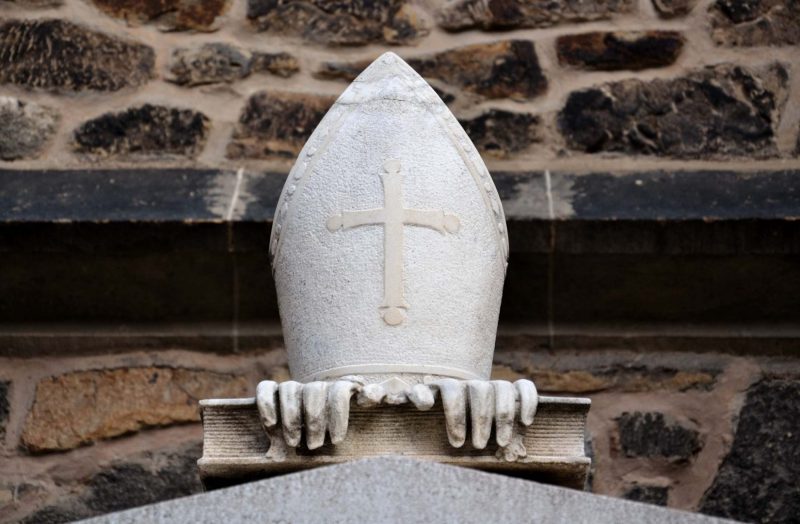
Days/years. All the variations on the “three years and six months” in Daniel and Revelation are quite unusual. This language draws attention to the symbolic nature of the period. Just as a short-lived beast represents an empire that can last for centuries, so does an apocalyptic day symbolise a historical year—a code suggested by Scripture, first implicitly, through the day-year correspondence, as explained below.
Day-year correspondence in the Bible
- Week of days and week of years (Genesis 29:27; Leviticus 23:3).
- The day of Pentecost after 7 × 7 days, and the year of Pentecost (Jubilee) after 7 × 7 years (Leviticus 23:15-16; 25:8-13).
- Many periods of 40 days and 40 years, but no period of 40 hours, 40 weeks or 40 months (Genesis 7:12, 17; 8:6; 50:3; Exodus 24:18, 34:28; Deuteronomy 9:18, 25; 1 Samuel 17:16; 1 Kings 19:8; Jonah 3:4; Matthew 4:2; Acts 1:3; Exodus 16:35; Judges 3:11; 5:31; 8:28; 13:1; 1 Samuel 4:18; Ezekiel 29:11-13; Amos 2:10).
The day-year correlation is also explicitly stated in the Bible in the context of judgements given by God Himself:
Judgement
- Israel’s unfaithful and defeatist attitude after the 40 days of exploring Canaan is punished with 40 years of wandering in the wilderness (Numbers 14:34).
- The 390 days + 40 days of Ezekiel’s dramatised prophecy represent 390 years of Israel’s disobedience and 40 years of Judah’s disobedience (Ezekiel 4:3-6).
Various apocalyptic prophecies express or imply the use of the standard day-year code:
- The prophetic time in Daniel 9:24-27 is expressed in weeks (70), but it contains many major events that could not be fulfilled in only 490 actual days (one year and four months), so commentators of all orientations recognise that “weeks” here should be understood as septennium (weeks of years), implying the use of the day-year code (Daniel 9:24-27).
- The “three and a half times” (3.5 years) of Daniel 7:25; 12:7 as the time of the Antichrist’s activity correspond to the “half week” (3.5 days) of Daniel 9:27 as the time of Messiah the Leader’s activity, thus reflecting a day-year correspondence (Daniel 7:25; 12:7 and Daniel 9:27).
- The 1260 days/42 months (3.5 years) of Revelation 11:2-3 and the 3.5 days of Revelation 11:9, 11 also reflect the day-year correspondence (Revelation 11:2-3 and Revelation 11:9, 11).
The day-year code was accepted by the Church Fathers of the 3rd to 8th centuries, especially Tichonius, Primasius, Bede, Berengaud, and Bruno de Segni; by the great medieval rabbis such as Nahawendi, Saadia, Rashi, Nahmanides, and others. Beginning with the Italian abbot Joachim of Flora (13th century), the day-year code was applied to the 1260 days and then gradually extended to the rest of the apocalyptic periods. It was used by Waldensian, Wycliffite, and Hussite theologians, and from the Protestant Reformation onwards it became a generally accepted hermeneutical rule until the 19th century. Scholars of the stature of Isaac Newton and John Napier and many other commentators routinely used this code in apocalyptic chronology.
According to Sphrantzés[7], the day-year code was also known in the Orthodox world and was used in prophecy by Byzantine scholars in the 15th century. Under the influence of Judeo-Christian culture or ancient Eastern traditions, the day-year code is also reflected in Baha’i theology, as well as in Wu-Cheng’en’s[8] 16th-century Chinese novel. Even in Mesopotamia, more than 1,700 years before Christ, King Hammurabi proclaimed a jubilee of total debt cancellation on the occasion of the completion of a “month” of years (30 years of reign)[9].
1260 historical years. The three and a half times (1260 days) represent the main “event” between the division of the Roman Empire and the Day of Judgement. It is therefore more credible that this period should be 1260 years, meaning a large part of the Christian era. Interpreted literally (three and a half years), the duration is minuscule and does not deserve the special attention given to it. On the other hand, a duration of 1260 years from the appearance of the Antichrist’s horn, immediately after the division of the Roman Empire into Romano-Germanic states, is extremely significant, since it describes 12 centuries of conflict and bloody persecution.
In conclusion, the prophetic period of “a time, [two] times and half a time” (3.5 years), also expressed as 42 months or 1260 days, appears to symbolise 1260 historical years. According to the prophecies of Daniel, and in accordance with the day-year code, these 1260 years represent the time of the war waged by the Antichrist against the “saints of the Most High” and the time of waiting until the time of the end[10]. According to Revelation, this is the time: when the people of the heavenly temple, or heavenly Jerusalem, will be trampled underfoot[11]; when the “two olive trees” or “two witnesses” will “prophesy clothed in sackcloth”[12]; when the heavenly woman will take refuge in the wilderness, like the prophet Elijah[13]; and when the Antichrist beast will act in its characteristic way[14].
Before we examine the historical applicability of the prophetic time of 1260 years, we must first examine the probability of the historical identification of the Antichrist.
The secret of St Paul
From the earliest times, Christians have understood that the arrogant horn of Daniel 7 represents that rival of God and deceiver of Christianity—called by Paul “the man of lawlessness” and “the man doomed to destruction”—who will try to take God’s place in the Church[15]. By the end of the first century, Christians had already given this feared figure the Greek name Antichristos, which means both “vice-Christ” and “anti-Christ”[16].
In the early centuries, Christians interpreted the obstacle in the way of the Antichrist, of which Paul had written[17], as the unified Roman Empire. In the fifth century, when barbarians were invading the world, establishing new states on Roman territory and dividing the Roman world with the acquiescence of a helpless imperial government, St Jerome, along with many others, realised that Paul’s prophecy was being fulfilled. The Roman world was collapsing; the emergence of the Antichrist was becoming a threat.[18]
For anyone who has studied enough history, the prophetic scenario in Daniel 7 is quite transparent as to the identity of the Antichrist, although today there are even Protestant theologians who systematically avoid the suggestion of the prophecy. Some try to find other historical identifications for the first three beasts of the prophecy in order to avoid the fourth beast being labelled as the Roman Empire. Others identify the fourth beast as the Roman Empire but say that the Antichrist will not emerge until the end of history, after a rebuilding of the old empire.
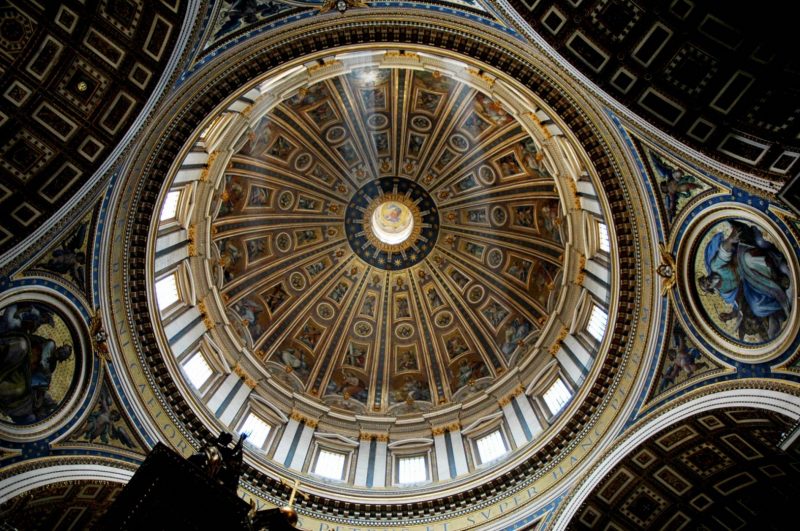
There are also some exegetical reasons for this confusion. Paul foresaw that the “man of lawlessness,” Jesus’ rival, would be an individual[19], whereas the papacy is a system, an institution. The Roman Catholic principle regarding the Church is that Jesus founded His Church on “one man.” However, unlike Christ, who is the immortal Sovereign Pontiff, the earthly pontiff is replaced every few years[20], with Francis already being the 266th.
It is obvious that the Apostle was referring to an individual, since he claimed that the “secret power of lawlessness” had already begun to work while he was writing his letter[21], when the papacy had not yet been established in the Church. In this case, the “secret power of lawlessness” was rather a particular “Christian” heresy, which was to produce a charismatic figure with political pretensions in the Church and in the world. The individual was to be the product of a great apostasy that would soon manifest itself in the Church[22] drawing crowds into its dazzling delusion[23]. The nefarious character was to be destroyed at the second coming of Jesus.[24]
This last remark has been interpreted by many to mean that it is not an individual but an institution that will survive until the Parousia. And if we look at the prophecy in the way it was fulfilled, not in its originally intended scenario, the interpretation is correct. Yet Paul was speaking of an individual because he believed that Christ’s return would occur in the same generation, as Jesus had foretold[25].
Paul’s conditional prophecy announced that the Antichrist would enter the scene accompanied by the miraculous powers of Satan[26], while the Papacy entered the political scene through a malignant development of the role of ecclesiastics, through conspiracies and diplomacy, accompanied by undue pretensions and theological and historical falsehoods, not through the action of paranormal powers.
Experts generally agree that Paul’s prophecy in 2 Thessalonians 2 is largely a commentary with allusions to the prophecies of Daniel. The phrases “the man of lawlessness” and “the secret power of lawlessness” correspond to the “lawlessness of the desolator” in Daniel 8:13 (in the Hebrew text), and the reference to apostasy and the establishment of the “man of lawlessness” in the temple of God, demanding a superlative worship[27], also reflects Daniel’s prophecies[28].
Interestingly, Paul’s prophecy alludes in particular to the parallel prophecies in Daniel chapters 8 and 11, where the haughty, ruthless horn, a master of political charades[29], that illegitimate and bloody king[30], has been identified by many commentators with Antiochus (the first persecutor) and the Antichrist (the last persecutor).
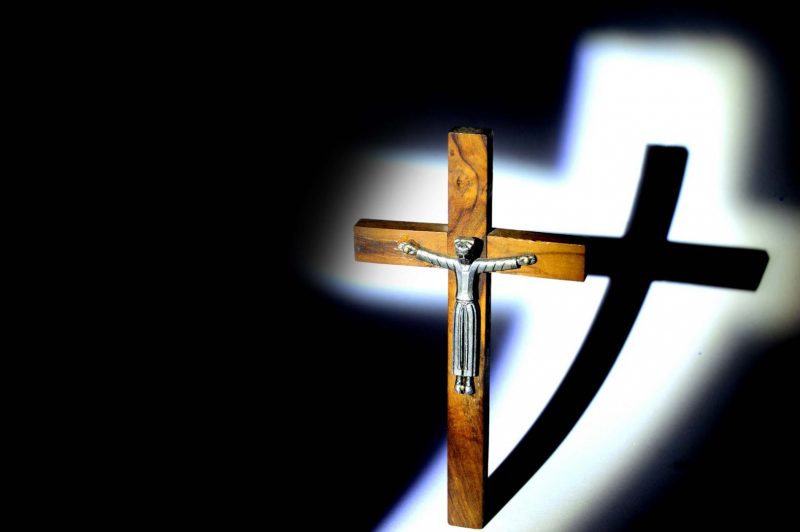
While the Antichrist is already identified in Daniel 7 as the power persecuting the saints 1260 years after the rise of the first ten Christian successor states of the Roman Empire, the statements in Daniel 8:17, 19; 11:45; and 12:1 assure us that this power will continue until the time of the end. Therefore, even if the arrogant king of Daniel 8 and 11 is identified by some with the usurper Antiochus, the first persecutor, this can only be the beginning, an anticipation and foreshadowing of the incomparably more important actors who were to appear in his spiritual succession: the Caesars and the Roman pontiffs.
In all these prophecies of Daniel, the horn is identified with “a king”[31] and this is probably the main reason why Paul speaks of the Antichrist as an individual. The angel explained to Daniel that, in prophecy, a king can mean a kingdom[32]—that is, a dynasty, and not an individual. However, this veiled language, compatible with the 1260 years of war with the saints, could not have been anticipated in the apostolic age. Nor would it have been advantageous, since God’s ideal plan, revealed through Jesus, was that Christ should return in the same generation[33]. This is what the Apostles believed and hoped for[34].
This is interpreted in many ways by Christians, but if we take Scripture seriously, the fulfilment of the promise of Christ’s return has been delayed for the glory of God’s kingdom and the salvation of many[35], because all revealed prophecies are conditional[36]. Jesus revealed the condition for the fulfilment of the promise in the same generation[37], affirming that the exact time had not been revealed to Him by the Father[38], and warning that His coming might be delayed[39].
In the apocalyptic prophecies, God revealed the secrets of the future, but He did so in a veiled language, so that the secret of time would not be understood for ages[40]. It was not until the twelfth century that the first commentator would come along in Christianity to identify the 1260 days as 1260 historical years[41], and it was not until the thirteenth century that the Antichrist’s horn began to be identified with the papal monarchy, whose power had by then become overwhelming[42].
We note, however, that God, beyond His ideal plans and conditional revelations about the return of Jesus in the first Christian century, knew beforehand, foresaw what was to become history, and revealed it in partially concealed language, because it would not have been for the benefit of mankind to know everything beforehand.
Today, however, after the passage of two millennia of turbulent Christian history, when the 1260 years have already passed and we are well into the end times, we can interpret the vision of Daniel 7 by analogy: just as the fourth beast was identified as an “emperor” before it was more accurately identified as a “kingdom,” so the horns of the Roman beast, including the arrogant and persecuting horn, which were shown to symbolise “kings,” are today identifiable as “kingdoms”—political powers.
Apocalyptic politics
There are several scenes in Revelation in which a number of commentators have identified the papacy. However, we will only refer to the most prominent apocalyptic view of the subject, which is reported in chapter 13 of the book.
Chapters 12 and 13 of Revelation describe the triple alliance of the beasts: the dragon of heaven, the beast of the sea and the beast of the earth, thus describing the protagonists of the great cosmic conflict unleashed “in heaven”[43]. From the moment of the expulsion of the heavenly dragon, the war continues on earth, bringing “woe” to the land and to the sea.[44] The whole universe is thus affected.
Consequently, the scenes in chapter 13 describe how the conflict affects the other realms of the world: the sea and the land. Thus, a monstrous beast rises from the sea, corrupting the whole earth, condemning heaven, receiving universal worship, and waging war against the saints[45]. In the next scene, another holy monster rises, this time from the earth, deceiving the world with real miracles and unleashing persecution (from economic boycott to physical destruction) on those who are not deceived[46].
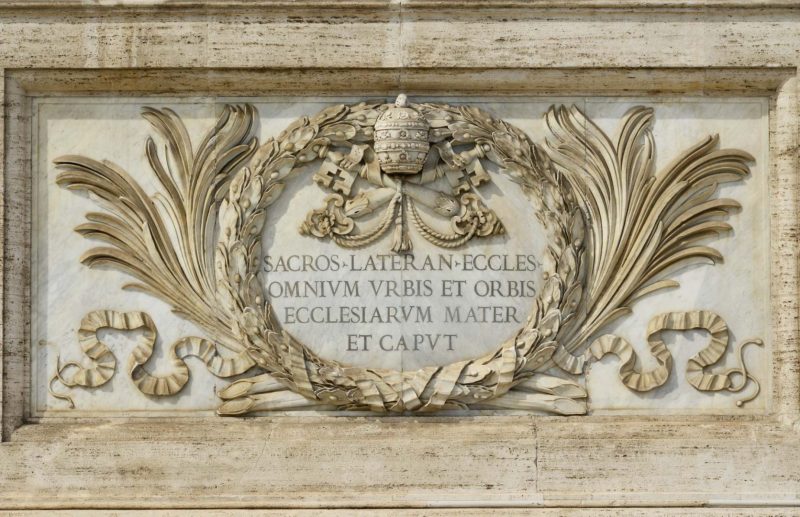
This triple alliance is a blasphemous imitation and a parody of the Trinity. The dragon (the devil, cf. Revelation 12:9) has become the god of this world[47] and the father of lies[48]. The sea beast is the embodiment of the lie, the offspring of the dragon. Like the dragon, it has seven heads and ten horns and the same specific time of action against God’s people (3.5 years, cf. Revelation 12:14; 13:5).
The sea beast parodies Christ in many ways, which is why we can call it “pseudo-Christ.” Just as Christ was active for three and a half years, then “slain” like a lamb, and then resurrected and given the throne of God and universal authority, so was the pseudo-Christ monster active for “three and a half years,” then suffered a deadly wound (described in the Greek text as “stabbing”), which eventually healed and the monster resumed its role with even greater force. This time, everyone follows it in awe, and its cult is eventually established worldwide. There’s a reason why many Apocalyptic commentators have seen in the sea monster the dreaded Antichrist.
The monster rising from the earth is like the unclean spirit who appeared as a “ghostly figure coming up out of the earth,” posing as a prophet of God[49]. There is a reason why it is still called the “pseudo-prophet”[50], the one that proclaims the cult of the false Christ and, through the seduction of extraordinary miracles and the power of political, social and economic coercion, causes the whole world to adopt the symbols of the false Christ. This monster has two harmless and significant lamb’s horns, on the one hand imitating the gentleness of Christ and expressing the youthfulness of this superpower, and on the other hand, it has a voice that expresses the will of the dragon: that the whole world should pay homage to the false Christ.
The role of the pseudo-prophet is thus to heal the wound of the pseudo-Christ, using the two strategic principles of evil: seduction and coercion; diplomatic lies and violence. At the same time, the pseudo-prophet parodies the Holy Spirit of God and Christ by performing signs and wonders, imitating the miracles of Elijah and Pentecost (fire from heaven), which God had not allowed any demon to do in the past. Like the Spirit of God, the false prophet invigorates the idolatrous image of the pseudo-Christ and gives it life[51].
Identifying the three prophetic monsters
Before discussing a more precise identity of these apocalyptic symbols, it is time to address an extremely important detail. While the monstrous pseudo-prophet is not described, and the Apocalypse refers only to its young, innocent horns and its dragon-like voice, without mentioning the shape of its body (and leaving room for the reader’s imagination), the first two beasts are described in detail. And these details are very important for their identification.
The symbols of the Apocalypse are often complex because they have to express the complex historical, political, and spiritual reality as graphically as possible. These monsters cannot be individuals because they have seven heads and ten horns. The scarlet beast of Revelation 17:3 also has seven heads and ten horns. It is, therefore, necessary to identify the same historical entities in all these places.
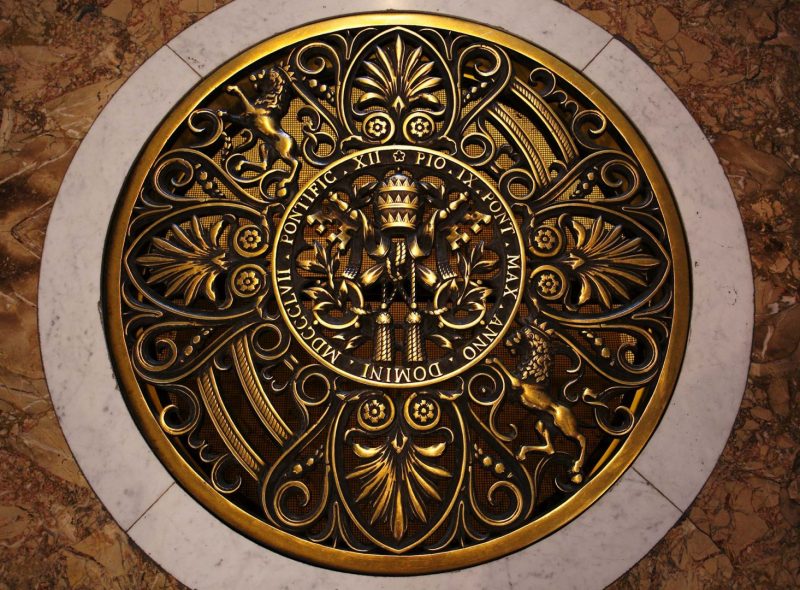
The dragon is depicted with several heads and horns because it represents not only the devil, but also the powers of the world through which it has acted and continues to act[52]. This is why it has seven crowned heads, suggesting political powers[53]. According to the explanation in Revelation 17:10, these heads symbolise the successive historical powers that God’s people have faced and continue to face. (Again, we have in mind the rule already established in Daniel 2:38-39 and 7:17, 23, where “a king” is the personification of a “kingdom,” not the expression of an individual).
In Revelation 13:1-3, the complexity of heads and horns has the same meaning, indicating that the Antichrist monster is not an isolated individual, nor a strange new institution, but is one with the succession of great powers. Note, however, that not all the heads of the universal beast are equally important. One of the heads of the beast bears the ten crowned horns, identifying it with the Roman beast of Daniel 7, while the other six heads have no crowns. Furthermore, the prophecy states that the sword wound received by this monster was fatal to a particular head, leaving us to guess which one is in question.
The sea monster. The description of the sea beast links directly to the prophecy of Daniel 7 through a number of elements: It has ten horns (which in Daniel 7 are all on the head of the Roman beast, representing the successor political powers of the Christianised Roman Empire); it has the body of a leopard (which in Daniel 7 symbolises the empire of Alexander and the Hellenistic world); it has the paws of a bear (which in Daniel 7 symbolised the Persian Empire); it has the mouth of a lion (which in Daniel 7 symbolised the Babylonian Empire); and it came up out of the sea (just as all the beasts in Daniel 7 come up out of the sea[54]).
Consequently, the sea beast of Revelation 13 has for its heads all the kingdoms of Daniel 7. However, while Daniel describes four separate and increasingly complex powers (with the third and fourth containing secondary powers: four heads and ten horns respectively), the sea beast of Revelation 13 is a world empire, from a historical and contemporary perspective, divided into seven successive powers, one of which is divided into ten secondary powers.
Therefore, just as the Hellenistic beast (the leopard) of Daniel 7 had four heads, symbolising the powers into which Alexander’s empire was divided, so it is possible that the final heads of the sea beast represent complex powers, politically divided but with a unified spirituality, as the Hellenistic world once was, or as the Christian world, heir to the Roman Empire, has long been, in the West, in the East, and throughout the world.
In order to identify the heads, we must consider the visionary scope of the Apocalypse. While Daniel looks exclusively to the future, making predictions beginning with the Babylonian Empire, the Book of Revelation also contains a profound retrospective of the great cosmic conflict, going back to its origins.
Therefore, the seven heads of Revelation, which are both “kings” and “mountains” (i.e. kingdoms and superpowers, not individuals[55]), are not to be listed from Babylon onwards, as in the prophecy of Daniel, but from the time when God chose a people to keep the knowledge of truth alive on earth, and from the time when the first conflict between God’s people and a politico-religious power arises.
The ancient prophets mention Egypt and Assyria[56] before Babylon. Thus the first five superpowers are listed: 1) the Egyptian Empire; 2) the Assyrian Empire; 3) the Chaldean-Babylonian Empire; 4) the Medo-Persian Empire; and 5) the Greco-Macedonian Empire. The sixth superpower, contemporary with the writing of Revelation, was Rome[57], the ten-horned beast or kingdoms, which had not yet received power at the time of John[58].
The seventh superpower, the culmination of evil, which would come towards the end of history and reign for a short time, could be the modern antichristian state, which emerged with the French Revolution and reached its peak in the communist world.
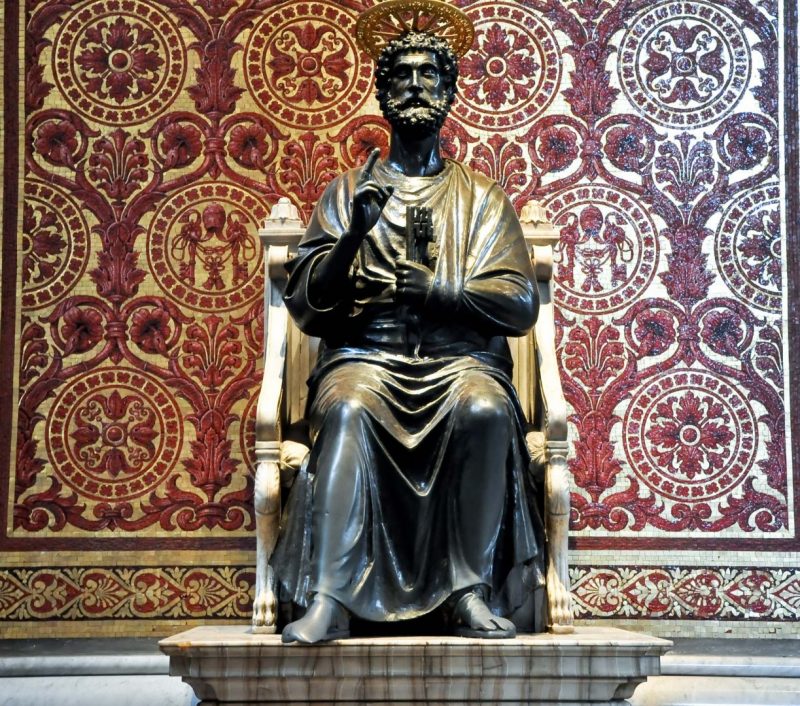
After the seventh kingdom, no new kingdom arises[59] but history spirals back to an earlier power—certainly not one of the five that fell long ago and forever. The statement is consistent with that of chapter 13, where we are warned that the old regime of the pseudo-Christian ten-horned beast will return; moreover, it will briefly dominate the whole world.
We also note that the sea beast of Revelation 13:1-3 behaves exactly like the little horn of Daniel 7 (utters blasphemies and wages war against the saints for 3.5 apocalyptic years). Therefore, despite the fact that the seven-headed monster encompasses the whole of Christendom and the whole world, even including ancient history, the central and inspiring force of this monster at the time of the fulfilment of the prophecy is this “little horn” of Daniel 7. Now, according to the analysis made above in the section “The Antichrist Horn of Daniel 7,” the only serious candidate is the medieval papacy as a political power.
Did the papal regime last 1260 years?
We have already explained that the various cryptic periods in the prophecies of Daniel and Revelation, expressed in the apocalyptic unit of time (day), represent the same prophetic period of 1260 “days” of the Antichrist’s rule and hostility towards the true believers: 1260 historical years. Does this period apply to the historical papacy?
The “Holy See” has existed since ancient times. In fact, every episcopal throne was considered apostolic and sacred. In the East, for example, the bishoprics of Alexandria, Antioch, Ephesus (later replaced by Constantinople), and Jerusalem were apostolic, holy sees. In time, however, the terms “Holy See” and “Apostolic See” were restricted to papal rule. The idea of a papal state arose from the belief that the Church should have supreme power in society and that governments should be subject to it—the theocratic principle.
The small Vatican City State, sovereign since 1929, is the successor to the much larger, multi-regional and powerful Papal States (often called the Church States) that operated under that name between 754 (the Pepinic Donation) and 1870 (the year of the “definitive” abolition of the Papal State). Commentators who have considered various moments of the event in 754-758 as the date of the foundation of the Papal State have calculated the end of the 1260 years of papal rule for the years 2014-2018[60].
Nevertheless, these calculations are only arithmetically correct. The historical reality has been artificially set back by more than two centuries. Apart from the fact that there was no papal state between 1870 and 1920, history proves that the dissolution of this state actually took place in 1798, as a result of the French Revolution, and that between 1798 and 1870 this state was repeatedly overthrown after each attempt to rise, functioning intermittently between 1800 and 1808, 1814 and 1849, 1850 and 1870. The period after 1798 was one of permanent political and spiritual humiliation for the Papacy and for the Roman Church in general. It never regained the supremacy it had enjoyed in Europe under the old regime (before the French Revolution), despite a spectacular improvement in its image.
Let us not forget that the prophecy predicted 1260 years of war and persecution against the “saints.” Yet the secular governments that took power after the French Revolution abolished the religious persecutions imposed by the Code of Justinian (published in 534) and practised during the Middle Ages and the old regime of the Modern Age.
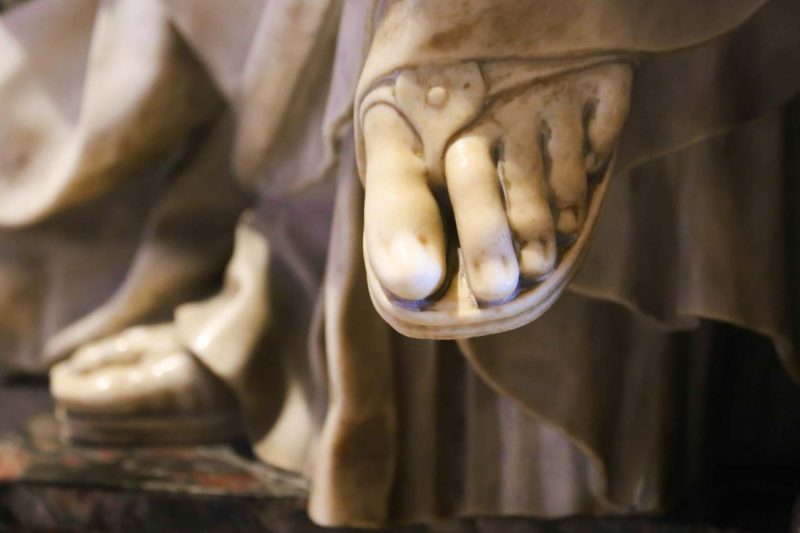
On the other hand, the papacy held political power even before 754. Before the classical Papal State, the papacy had another form of state, much more modest in power but impressive in territory. The real beginnings of papal temporal power were in 538-554, with the imperial recapture of Italy from the Ostrogoths. In 538, Rome and the southern territories were removed from Ostrogothic rule, and in 554, Emperor Justinian confirmed Italy’s political status with the Pragmatic Sanction, leaving the conquered territories under the jurisdiction of the Empire, and the Pope with supreme religious authority but little, incipient political autonomy.
The Church’s vast estates, known as the Patrimonium Sancti Petri, comprised a vast array of territories in Italy and Sicily, the most important of which was the Duchy of Rome. These estates were originally donations from the wealthy, dating back to the time of Constantine the Great. As the administrator of these estates and as the preferred leader of the Italians, the papacy was, in reality, a true state within a state, nominally subject to the Eastern Empire, but governed by an increasingly autonomous papacy that knew how to take advantage of the political circumstances in Italy in 538-739.[61] The papal situation from 537-752 is called the Byzantine Papacy (i.e. subject to the Eastern Empire).
Various Catholic writings attest to the papacy’s “more than 12 centuries” of rule[62], and the fact that the true origins of the papal state were in the 6th century is also confirmed on the Vatican website. There’s a reason why this political power is described as a little horn in the prophecy of Daniel 7:8. After 754, the Papal State became a great horn[63]. Therefore, the measurement of the period of domination and “war against the saints” must be made from the origin of this political power in 538.
This article is part of a series of three written by Florin Lăiu on the subject of antipapism and the possibility that the apocalyptic Antichrist is the papacy itself, the axis of historical Christianity. In the first part, the author familiarises us with the classical Protestant perception of the concept and prophetic figure of the Antichrist, evaluating the classical identification of the Antichrist with the papacy. In the second part, the analysis continues with a careful deciphering of the main biblical prophecies concerning the Antichrist. The final part concludes with an apocalyptic scenario that focuses on the role of the false prophet of Revelation 13 and the way in which the world will be deceived into worshipping the creature instead of the Creator.




















